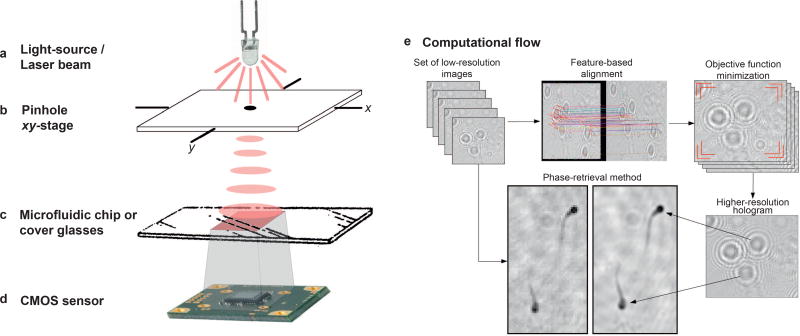Figure 1.
Schematic representation of the experimental setup used to acquire holographic signatures. In (a) the light source is used with a pinhole placed over, as shown in (b). In (c) the object-plane corresponding to the sample to be inspected is illustrated. The detector-plane is shown in (d), where a CMOS-based imaging sensor is used. (e) General overview of the presented approach: set of LR images with small shifts of the light-source is registered and an optimization method minimizes an objective function. The obtained HR hologram is then processed by a phase-retrieval method into morphological information. Noise suppression can also be obtained from the multiple shifted images.

